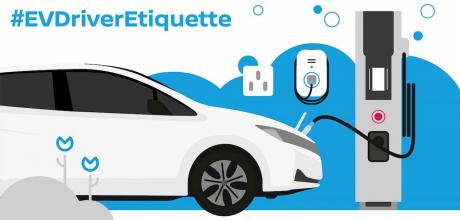Is there an electric charging etiquette?
As readers will be well aware, there’s a big shift happening. And while we can count ourselves as ‘early adopters’, with a keen interest in technology and motoring in general, the majority face a plunge into the world of electric driving. Here, it’s public charging stations that represent the wild west, with Type 2 sockets drawn and shot from the hip.
CURRENT AFFAIRS
Early adopters will find once-deserted charging stations enjoying a frisson of activity from ‘newbies’, and tensions will rise as demand increases. This tension can be eased if you follow charging etiquette. This was once unspoken, but is becoming increasingly, well… spoken, and is documented on charging websites, electric vehicle forums and even signposts. Here we highlight some of the most salient commandments.
ICE-ing
This is the most obvious, and perhaps the most egregious charging crime of all: the act of parking a purely internal combustion-powered car or van in the space reserved for electric charging. It’s even spawned the nickname ‘ICE-ing’ and livid battery electric vehicle (BEV) owners desperate to charge up have been known to take to social media to vent, posting pictures of offending vehicles blocking chargers.
Of course, we wouldn’t recommend shaming other drivers, and the best policy is education. Rude EV drivers will only give the technology a bad name, so it’s best to be polite and leave a note. Depending on where the charger is located, the offending driver may also be risking a fine if they’re spotted by a parking attendant.
Be a timely charger
While a few years ago you might have found your only charging station companion was an inquisitive wood pigeon, they’re getting busier now, with queues often forming at peak times. For this reason, it’s good etiquette to top-up just enough to get home or to continue to your next stop on a long-distance journey. At busy charging points, it’s considered poor etiquette to leave a car on charge for hours at a time. Similarly, a plug-in car should never be parked in an electric charging spot and left unplugged.
Most EVs come with a companion smartphone app which can help keep tabs on your car’s battery status and how long it has been charging, even if you’re out of sight of the car. If you need to gain as much range as possible, we’d still recommend only rapid charging to around 80 per cent capacity. Above this level, the charging rate slows down dramatically to manage battery temperatures and protect them from damage, and this significantly increases the charging duration.
“It’s considered poor etiquette to leave a car on charge for hours at a time.”
The electric charging pecking order
This one is somewhat harder to police, but there’s a general consensus within the alternative fuel community that BEVs in need of a charge should take priority over plugin hybrid vehicles, which also have a petrol or diesel engine. In practice, if you own a PHEV and you want to add a few miles at a public charging station, first gauge how busy it is. If the answer is ‘very’, then it may be best to wait until you can charge at home, or at the office.
If your PHEV is charging and an EV is queuing for the spot, have a polite chat with the driver, and if they’re desperate for a charge for their onward journey, offer them the spot. Until the rollout of chargers meets demand, we all need to get along and help each other as much as possible. Similarly, if an ultra rapid-charger is installed, it’s good etiquette to let cars with faster-charging capabilities use it, allowing the maximum number of EVs possible to get a charge per day. ‘Camping out’ in a fast charger with a slow-charging EV is likely to cause some looks of consternation or requests to vacate.
Help support the free chargers
If you’re lucky enough to find a free public charger, it will have been provided as an incentive to attract customers or visitors, for the mutual benefit of both parties. Therefore, it’s only fair to reciprocate and help support the charger and electricity it provides. If it’s outside a coffee shop, buy a coffee. If it’s at a garden centre, be sure to buy a plant… you get the idea. After all, if nobody supports the business, the only result is that the free charger will likely disappear.
Respect the charging point
This one is so blindingly obvious, it barely needs pointing out, but charging points need to be respected like any other public facility. That means putting the provided cables back on their housing and being careful to leave cables so that they aren’t a trip hazard for other users. For the time being, it’s also courteous to ensure your hands are sanitised before using public chargers.
If you spot damage or a fault, either call the charging provider or report the issue via their website or smartphone app. As charging points are increasingly located in residential areas, it’s also important to be mindful of making noise, such as listening to music, making calls, or playing games while sitting in the car as it charges.


